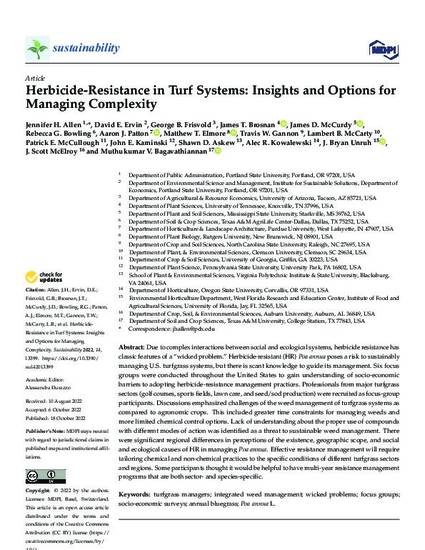
- Turfgrasses -- Diseases and pests -- Control,
- Herbicide resistance -- Environmental aspects -- United States,
- Annual bluegrass -- Control.,
- Sociogenomics -- Surveys -- United States
Due to complex interactions between social and ecological systems, herbicide resistance has classic features of a “wicked problem.” Herbicide-resistant (HR) Poa annua poses a risk to sustainably managing U.S. turfgrass systems, but there is scant knowledge to guide its management. Six focus groups were conducted throughout the United States to gain understanding of socio-economic barriers to adopting herbicide-resistance management practices. Professionals from major turfgrass sectors (golf courses, sports fields, lawn care, and seed/sod production) were recruited as focus-group participants. Discussions emphasized challenges of the weed management of turfgrass systems as compared to agronomic crops. This included greater time constraints for managing weeds and more limited chemical control options. Lack of understanding about the proper use of compounds with different modes of action was identified as a threat to sustainable weed management. There were significant regional differences in perceptions of the existence, geographic scope, and social and ecological causes of HR in managing Poa annua. Effective resistance management will require tailoring chemical and non-chemical practices to the specific conditions of different turfgrass sectors and regions. Some participants thought it would be helpful to have multi-year resistance management programs that are both sector- and species-specific.
Copyright: © 2022 by the authors. Licensee MDPI, Basel, Switzerland. This article is an open access article distributed under the terms and conditions of the Creative Commons Attribution (CC BY) license (https:// creativecommons.org/licenses/by/ 4.0/).
